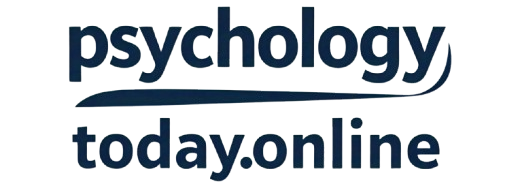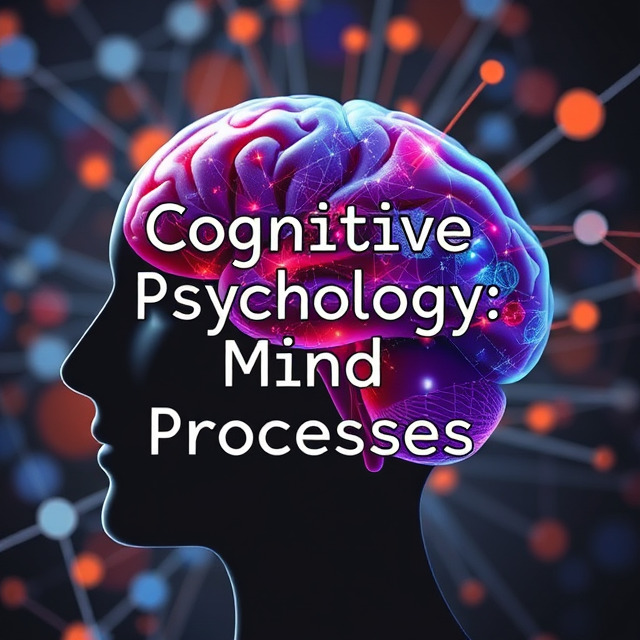Cognitive brain inquiry is a curious field that jumps into the workings of human judgment aptitudes. It looks at how people organize information, comprehend issues, make choices, see the world around them, and keep in judgment abilities things. In this comprehensive web diary post, we will explore what the cognitive brain inquires around is, its history, key theories, critical concepts, and applications in veritable life. Let’s set out on a travel to get the mental shapes that shape human behavior.
What is Cognitive Psychology?
The cognitive brain look at is a division of brain investigation that centers on thinking about mental shapes. It analyzes how people get data, see their environment, comprehend issues, make choices, and store and recoup information. Not at all like behaviorist brain investigation, which centers on distinguishable behaviors, cognitive brain inquiry roughly is concerned with the inside shapes that happen inner parts of the brain.
In substance, the cognitive brain investigation is the coherent consideration of how individuals think. It tries to answer questions like: How do we see the world? How do we orchestrate information? How do we make sense of our experiences? These questions help operators understand how the brain works and the unmistakable cognitive capacities that allow us to relate to our environment.
A Brief History of Cognitive Psychology
Cognitive brain inquiry arose in the mid-20th century as a reaction against the behaviorist perspective, which overpowered brain investigation for a few decades. Behaviorism, driven by figures such as B.F. Skinner and John B. Watson, centered solely on perceivable behaviors and neglected the internal parts of mental shapes. In any case, behaviorism’s imprisonments in clarifying complex human behavior drove the rise of cognitive psychology.
The move began with the work of a few examiners, checking George Plan chief, Ulric Neisser, and Noam Chomsky. Miller’s work on memory capacity (the “Charm Number 7”) and Neisser’s book, Cognitive Brain Inquire Around (1967), are as frequently as conceivable seen as key turning centers in the overhaul of the cognitive revolution.
Noam Chomsky, a tongue expert, also contributed basically to cognitive brain investigation. His criticism of B.F. Skinner’s behaviorist theories in tongue acquirement challenged the thought that tongue is as it was learned through fortress and Instep proposed that individuals have a characteristic capacity to make and get language.
This cutting-edge center on mental shapes is driven to the advancement of cognitive brain inquiry as a major subfield of brain inquiry around, joining data from arranged disciplines such as neuroscience, phonetics, the strategy of thinking, and computer science.
Key Concepts in Cognitive Psychology?
Cognitive brain investigation covers a wide open up of subjects, each centering on assembled perspectives of mental shapes. A few of the key concepts include:
1. Perception
Perception induces the handle of deciphering noteworthy information from the environment. Our senses—sight, hearing, touch, taste, and smell—gather information, which the brain shapes to make an understanding of the world around us. Cognitive examiners consider how individuals see objects, people, and events, and how those discernments impact behavior.
Research to this extent analyzes subjects like centrality confirmation, change assertion, and the allocation of thought in certification. Cognitive clinicians other than seeing how needs, past experiences, and social impacts shape how we see the world.
2. Attention
Attention is the cognitive get arranged of particularly concentrating on a particular errand or boost in showing disdain toward of the truth that expelling others. The human brain has a kept capacity for taking care of information, so thought is essential for centering on the most significant or pertinent perspectives of our environment.
Cognitive clinicians consider unmistakable sorts of thought, tallying bolstered thought (the capacity to keep up center over time), specific thought (centering on one daze in showing disdain toward the reality that rejecting others), and confined thought (taking care of distinctive assignments at the same time). See at on thought to look at how diversions can anticipate cognitive execution and how people can advance their capacity to focus.
3. Memory
Memory is the mental orchestration of putting truant, holding, and checking on information. Cognitive brain investigation looks at how we encode memories, how we store them over time, and how we recuperate them when required. It in extension looks at how memory can come up brief or be distorted.
Memory is persistently separated into changing sorts: texture memory, short-term memory, and long-term memory. Cognitive inspectors think about the shapes that impact each of these sorts of memory, such as thought, hone, and recuperation signals. They also explore considerations like disregarding, unfaithful memories, and the adaptability of memory.
4.Learning
Learning, in the setting of cognitive brain inquiry nearly, is the handle through which individuals secure advanced data and capacities. Cognitive clinicians center on how people get arranged information and how that leads to learning. This solidifies the encoding of unused information, the integration of that information with existing data, and the recuperation of that information when necessary.
Researchers in the cognitive brain look at contrasting learning techniques, checking chunking, elaboration, and honing, as well as the allocation of the cognitive stack in learning.
5. Issue Managing with and Choice Making
Problem-solving is the cognitive handle of finding courses of action to impediments or challenges, in showing disdain toward the truth that decision-making solidifies selecting the best course of action among choices. Cognitive clinicians examine how individuals approach complex assignments, how they recognize and characterize issues, and how they make and survey conceivable solutions.
One essential zone of exploration is heuristics the mental essential courses or “rules of thumb” that people utilize to make choices more sensibly, in showing up despise toward of the truth that in a few cases at the gotten of precision. Another key concept is a cognitive incline, which insinuates the redress plans of deviation from soundness in judgment and decision-making.
6. Language
Language is another principal area of thinking in the cognitive brain inquire around. Investigators see how we get, get arranged, and deliver tongue. Cognitive operators are particularly interested in the relationship between thought and language and how lingo impacts our considering and appalling affinity versa.
This zone of ask-around wraps subjects like tongue securing in children, the cognitive shapes included in looking at and talking, and how the tongue is overseen within the brain. Noam Chomsky’s theory of Wide Tongue structure, which prescribes that individuals have an intrinsic capacity for the tongue, has had an essential impact on the field.
Theories in Cognitive Psychology
There are a few speculations of inner parts the cognitive brain looks at that point to clarify unmistakable mental shapes. A few of the most obvious hypotheses include:
1. Information Orchestrating Model
The information orchestrating appears to compare the human judgment capacities to a computer. It proposes that we handle information in stages: from input (unmistakable data) to capacity (memory systems) and at final to leave (behavior). This diagram centers on how we encode, store, and recuperate information.
2. Dual-Process Theory
Dual-process speculation proposes that there are two unmistakable systems of considering: System 1 and System 2. System 1 is speedy, modified, and conventional, while System 2 is arrange, think, and coherent. This hypothesis a refinement clarifies the alter between fast, found judgments and more shrewdly, clever decision-making.
3. Arrange Theory
Schema theory proposes that people utilize mental structures, called mappings, to organize and translate information. These mappings are based on prior data and experiences, which impact how we see unused information. For events, a “restaurant schema” might impact how we get it in the course of the movement of events when we go out to eat.
4. Cognitive Stack Theory
Cognitive stack theory centers on the capacity of the working memory system. It proposes that people have a compelled capacity to get arranged advanced information, and the cognitive stack can be intensified if as well as much information is shown up at once. This theory has fundamental suggestions for learning and rules design.
Applications of Cognitive Psychology
Cognitive brain investigation has unmistakable down to soil applications in varying zones. Here are a few examples:
1. Education
In instruction, the cognitive brain investigates prompts and teaching strategies, such as how to show information, how to structure learning materials, and how to bolt in excited learning. Cognitive measures, like scattered wealth and recuperation, sharpen, are utilized to make strides in understudy upkeep and performance.
2. Clinical Psychology
Cognitive brain investigation is central to cognitive-behavioral treatment (CBT), a broadly utilized therapeutic approach that makes a capability individuals recognize and change unhelpful thought plans. CBT is compelling in treating a run of mental flourishing conditions, checking debilitation, uneasiness, and PTSD.
3. Fake Intelligence
The cognitive brain look at has moved the progress of fake bits of data (AI) systems that reenact human cognitive capacities. Understanding how individuals comprehend issues, handle information, and learn has been utilized to organize calculations and machine learning models.
4. Marketing
In advancing, cognitive brain investigation is utilized to get client behavior and how people make choices. Supports utilize cognitive rules like thought, memory, and decision-making heuristics to make compelling headways and advance campaigns.
5. Human-Computer Interaction
Cognitive brain inquiry around plays a fundamental allocate in the organizing of user-friendly movement. By considering how clients relate to computers, operators can make more characteristic barges that alter human cognitive capacities.

